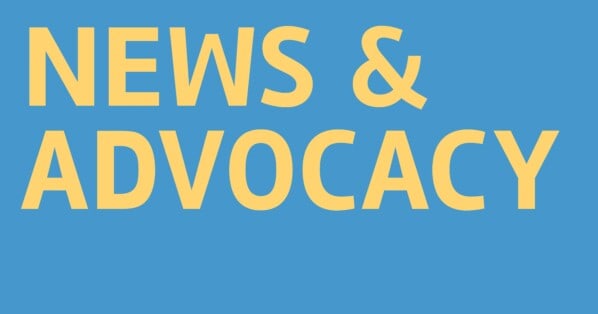It was over five years ago, during my term as treasurer on SWE’s board of directors, that the board began discussions on the need for an evaluation of the governance structure and volunteer service model for the Society. Given the impressive and explosive membership growth of the organization, our progression toward a global society, and the shifting needs of the membership, we realized an expert in organizational change was required.
Developing a New Order
The McKinley Consulting Group was engaged to develop recommendations for SWE based on benchmarking of other organizations, interviews with SWE leaders and members, and reviews of organizational data. McKinley worked with a small group of SWE leaders in FY15, which included representatives from the board, the region governance team, and the senate, to better understand our organization and its future potential. The board realized that many of the recommendations from McKinley and the FY15 task force included changes to the organization that would require communication and buy-in from across the membership, as well as a multiyear implementation plan.
Therefore, in FY16 seven subgroups, made up of BOD, senate, board of trustees, committee leadership, and other SWE leaders and members, were created to vet each of the recommendations in the McKinley report and to come up with short- and long-term recommendations for key parts of SWE’s existing structure and operations. The seven subgroups focused on: senate, committees, nomination committee, BOD, regions, bylaws, and sections.
During the governance change process, a quote from Renaissance philosopher Niccolò Machiavelli often came to mind. He wrote: “There is nothing more difficult to take in hand, more perilous to conduct, or more uncertain in its success than to take the lead in the introduction of a new order of things.”
Indeed, in order to help the membership understand the purpose and status of the recommended changes, multiple town hall meetings, webinars, podcasts, emails, texts, and web page updates were held. In FY17, a task force was created, and led by FY19 SWE President Penny Wirsing, F.SWE, to pull together the hard work and recommendations from the seven FY16 subgroups and develop a multiyear implementation plan for the new governance structure.
Redefining the Senate
During the several years of governance discussions, it was identified that the role of the senate as the strategic body of the Society was not being fully realized. Strategic planning responsibilities had been spread over several groups, so there was a concerted effort to consolidate under the senate structure. This effort allowed some of the nonstrategic responsibilities of the senate to shift to the board, committees, or HQ. Senator Lisa Rimpf agreed the changes were done “with a genuine appreciation for SWE’s rich history and legacy. We are embracing the organization’s growth, while advancing our strategic mission with the big picture in mind.”
The size of the senate was also changed to 21 members, with three-year terms, rotating out seven members per year. It was also decided that the members should be selected based on their competencies and skills as leaders alone, removing geography as a consideration. Members of the senate being slated by the nominating committee and voted on by the entire membership — including collegiate members — highlights the importance of senate positions. The first seven members of the revised senate structure have been slated on this year’s Society ballot by the nominating committee for installation in FY20. The full senate under this structural alignment will be voted into office by FY22.
Dissolving Boundaries
One of the most visible changes to the governance structure is the dissolution of regional boundaries in the United States. The region structure came about in the 1980s to assist with communication to members living in the same geographic area. At that time, the form of communication found to be fastest and most effective were “phone trees,” where information was passed down through the organization. As technology has evolved and communication has become more instantaneous and accessible to everyone, the need for a regional structure to enable communication went away.
SWE members generally use modern technology and media to connect socially with members all over the world. In addition, SWE must be able to select leaders nationwide and globally, without confining them to a single geographic area, particularly given the mobile nature of today’s careers and workforce. To be successful, however, change must be planned, and a lot of planning by the region governance team, the board, the FY17 task force, and many other SWE leaders went into the dissolution of regions, which became effective July 1, 2018.
The intent of restructuring the Society was to improve the overall experience of our members and further our mission. Therefore, the implementation plan for the governance changes had to ensure the membership was taken care of by an enlarged headquarters staff, by various channels of communication, with effective and fun WE Local events, with new bylaws templates, and with opportunities to tailor the volunteer experience to member interests.
The mission of the leadership coaching committee was also modified to focus on providing consulting to sections to help them succeed in fulfilling their goals. SWE sections, affiliates, and members at large are the heart of the Society and must be allowed to flourish in a flexible governance structure.
The SWE committee structure underwent some changes during the governance process, including the addition of the leadership roles in five standing committees to the nomination committee slate. The finance, ethics, bylaws, audit, and nominating committee chair-elect positions have been added to the slate in the current elections. These leaders, who will be voted on by the full membership, will be FY20 chair-elects and FY21 chairs of the five standing committees. With the completion of the election that takes place in FY20 (for FY21 positions), both the chair and chair-elect positions will have been voted on by the full membership. Again, the addition of these positions to the ballot highlights the importance of these committee positions that directly serve the operational backbone of the Society. Leadership of other committees will continue to be appointed. Committees are the infrastructure of the Society that allow us to drive our mission through dedicated and interested members.
As I look toward my presidency in FY20, I am excited to move the Society forward within the updated SWE governance structure. With a new SWE website being introduced this summer, the committees will have a landing page and a valuable resource for communicating their missions and opportunities to members. A new training program is also being developed for committee chairs and will take place this summer. The training is designed to assist these leaders with a deeper understanding of the SWE strategic plan and how each committee can work to better drive the mission and goals of the Society.
The bylaws committee, having done a huge amount of work on the governance-related bylaws changes, also updated the bylaws templates for sections to allow them to easily comply with the governance changes. The goal is to have all sections updated and in compliance in FY19. And, with the addition of the fourth strategic goal of diversity and inclusion, we will continue to provide resources, affinity groups, and training to our members and industry partners.
An extraordinary amount of work has gone into reinventing SWE to meet the needs of our growing membership. We are not done, however. In order to drive our mission and stay relevant, SWE must continue to be flexible and innovative in meeting the needs of our members. After all, change, and SWE, are the only constants in life!
Cindy Hoover, F.SWE, is vice president and chief engineer, operations, for Spirit AeroSystems. She holds a bachelor’s degree in electrical engineering from Wichita State University and an executive MBA from Friends University. A longtime SWE member, she has held numerous Society leadership positions, including FY15 treasurer and chair of the finance committee.







